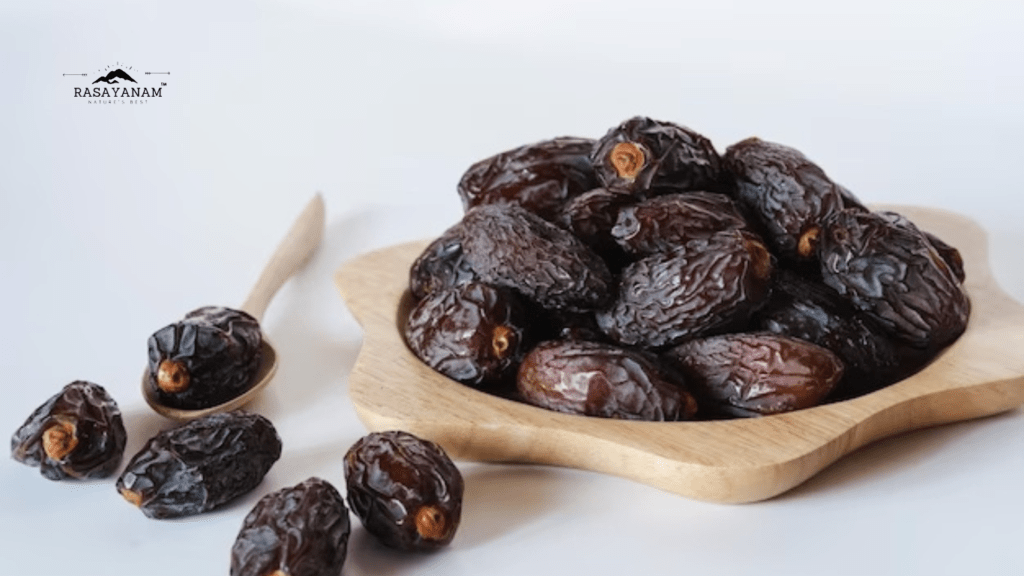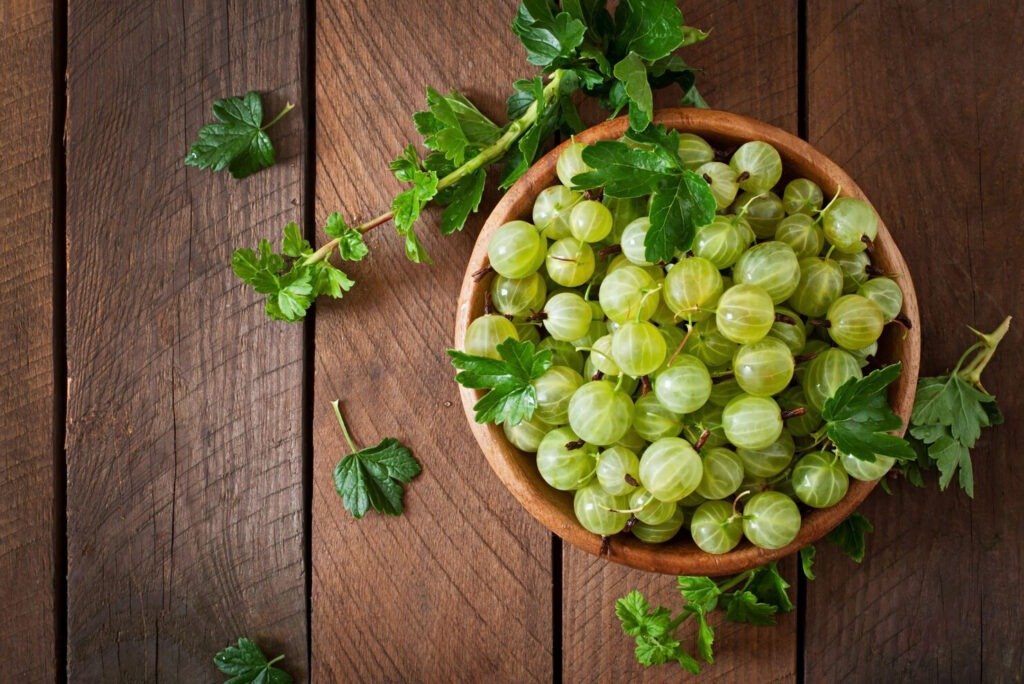Discover the remarkable history of Shilajit, a natural substance found in the Himalayas, with roots dating back to Ayurvedic traditions. Explore its creation through the breakdown of plants under microbial influence and its revered status as a rejuvenator. From Sanskrit origins to global translations like “destroyer of weaknesses,” Shilajit’s significance is unparalleled. Unveil the early Ayurvedic references in Sushruta Samhita, where its magical creation during summer months is explained. Travel through time to the writings of Abu Ali ibn Sina, who lauded Shilajit’s healing powers, and trace its journey through Charaka Samhita’s profound wisdom. Delve into Rasayanam ayurveda Shilajit’s tastes and characteristics as described in ancient texts, and immerse yourself in its captivating legacy.
Unveiling Shilajit's Ancient Legacy
Shilajit History: Tracing the Origins and Influence
Shilajit, a remarkable substance rooted in the heart of the Himalayas, carries with it a rich history steeped in Ayurvedic tradition. This naturally occurring material, shaped through the gradual breakdown of specific plants by microbial processes, has served as a potent source of vitality and rejuvenation for centuries. In this exploration, we delve into the captivating journey of Shilajit and its integral role in Ayurveda.
Unveiling the Sanskrit origins, “Shilajit” translates to “conqueror of the rocks” and “destroyer of the weaknesses,” reflecting its revered status. Known by various names across languages and cultures, Shilajit’s prominence has traversed boundaries, from “silajatu” in Bengali to “Uerangyum” in Tamil, and even “Mummio” in Russian.
Shilajit in Ancient Ayurveda: A Glimpse into its Formation and Early Recognition
Drawing from ancient texts like Sushruta Samhita, we uncover Shilajit’s enigmatic creation. During the heated months of Jeshta and Ashada, the sun’s rays induce the melting of mountain layers, giving birth to Shilajitu, a resin-like liquid. Nestled within the Himalayas, Tibet, Altai, and Caucasus, locals assign diverse names to this marvel, such as “mountain blood” and “rock sweat.”
Intriguingly, the esteemed physician Abu Ali ibn Sina, in “The Canon of Medical Science,” extolled Shilajit’s virtues as an all-encompassing remedy. This extraordinary substance found use in treating fractures, colds, and even snakebites, reflecting its versatile nature. Alexander the Great himself sought its healing prowess, reflecting its widespread recognition during the Middle Ages.
Shilajit’s Charaka Samhita Connection: Unraveling its Potent Role in Ayurvedic Healing
Within the pages of Charaka Samhita, Shilajit’s significance becomes even more apparent. Described as a panacea for ailments, it imparts boundless energy when employed judiciously. Combining Rasayanam pure Shilajit with vata-reducing herbs enhances its effects, ushering longevity, intelligence, and well-being. This elixir’s journey spans from bolstering memory to retarding aging, aligning with Ayurveda’s holistic approach.
Shilajit’s Flavor Profile: A Multifaceted Taste for Holistic Healing
Shilajit’s flavour spectrum, as described in The Yoga of Herbs, is examined to show its complexity. This substance, which exhibits astringent, pungent, and bitter tastes, harmoniously balances doshas. Its capacity to relax pitta and its soothing and cooling effects on kapha and vata demonstrate its adaptability. Shilajit’s qualities individually complement each dosha, with a warm virya and a powerful vipaka.
Finally, Shilajit’s historical journey is carefully woven into the story of the development of ayurveda. It is a veritable gold mine of wellbeing, demonstrating the continuing wisdom of traditional practises thanks to its wide range of applications, prestigious endorsements, and multidimensional character.
Shilajit History Unveiled: Exploring the What, When, Why, Where, Who, and How
Discover the intriguing journey of Shilajit through time, from its creation in the Himalayas to its role in Ayurvedic therapy. Delve into its properties, origins, and ancient uses.
What: Shilajit, a natural substance formed from plant breakdown influenced by microbes, is renowned as a rejuvenator in Ayurvedic therapy.
When: Over ages, particularly during the summer months of Jeshta and Ashada, the sun’s heat causes Shilajit to emerge as a resin-like liquid.
Why: Shilajit has been used for centuries due to its healing properties, addressing various ailments and promoting overall well-being.
Where: Found in the Himalayas, Tibet, Altai, Caucasus, and other regions, Shilajit emerges from mountain fissures due to the sun’s warmth.
Who: Ancient physicians like Abu Ali ibn Sina recognized Shilajit’s healing potential. Notably, Alexander the Great used it to treat wounds.
How: Shilajit’s usage is rooted in Ayurvedic texts like Charaka Samhita, describing its consumption with other herbs for vitality and longevity.
Explore the rich history of Shilajit and its role in traditional medicine. To learn more about Ayurvedic remedies and natural health solutions, visit
Pure Original Himalayan Shilajit
Exploring Shilajit History: From Ancient Ayurveda to Modern Understanding
Addressing Commonly Asked Questions about Shilajit
Q1. What is Shilajit and its Role in Ayurveda?
Ans. Shilajit, known as “Shilaras” in Sanskrit, is a naturally occurring substance found mainly in the Himalayas. It’s formed through the slow breakdown of certain plants under the influence of microbes. In Ayurveda, it’s considered a rejuvenating and anti-aging material known for its diverse health benefits. Explore more about Shilajit’s significance in Ayurvedic therapy [here](link-to-product-page-or-blog).
Q2. How was Shilajit historically used?
Ans. According to ancient Ayurvedic texts like the Sushruta Samhita, Shilajit is formed during the summer months when the sun’s direct rays melt the mountain layers, producing a resin-like semisolid liquid. Locals refer to it by various names like mineral oil, stone oil, and rock sweat. Historically, it was used to treat various ailments such as bone fractures, colds, asthma, and more. Discover the historical uses of Shilajit.
Q3. What is the significance of Shilajit in Charaka Samhita?
Ans. The Charaka Samhita, an ancient Ayurvedic text, emphasizes Shilajit’s potent healing properties. It claims that there’s no ailment that cannot be effectively treated by Shilajit when administered correctly. It suggests consuming Shilajit with specific herbs to balance doshas and promote energy.
Q4. How does Shilajit taste and affect doshas?
Ans. Shilajit’s taste and effects on doshas are described in the Yoga of Herbs. Its taste is a blend of astringent, pungent, and bitter flavors, with varying impacts on doshas. It’s known to pacify vata and kapha while potentially aggravating pitta.
Q5. How has Shilajit’s historical importance evolved?
Ans. Throughout history, Shilajit has maintained its prominence. From being used by figures like Alexander the Great to its recognition in ancient Ayurvedic texts, Shilajit’s value has endured. Over time, its applications have expanded, and modern research continues to uncover its potential benefits.
Exploring Shilajit's Historical Significance: Ayurvedic Wisdom and Beyond
Uncover the Enigmatic History of Shilajit through Time-honored Ayurvedic Wisdom
Frequently Asked Questions
Q1: What is Shilajit and where is it found?
A1: Shilajit is a naturally occurring substance primarily found in the Himalayas. It results from the slow breakdown of specific plants under microbial influence.
Q2: What does “Shilajit” mean in different languages?
A2: In various languages, Shilajit is referred to as “shilaras” in Sanskrit, “silajatu” in Bengali, “Uerangyum” or “Perangyum” in Tamil, “Mummio” or “Mumie” in Russian, and carries several other names across different cultures.
Q3: What is the historical significance of Shilajit in Ayurveda?
A3: Shilajit holds a revered place in Ayurveda, with mentions dating back to ancient texts like Sushruta Samhita and Charaka Samhita. It is considered a rejuvenating and anti-aging substance used for various health benefits.
Q4: How is Shilajit formed according to Ayurvedic texts?
A4: According to the Sushruta Samhita, Shilajit is formed during the summer months when the sun’s rays melt layers of mountains, resulting in a resin-like semisolid liquid. This substance is believed to seep from mountain fissures, imbuing it with mystical qualities.
Q5: What did historical figures like Ibn Sina and Alexander the Great say about Shilajit?
A5: Renowned figures like Ibn Sina considered Shilajit an all-healing remedy, citing its potential in treating various ailments including bone fractures, respiratory issues, and skin rejuvenation. Alexander the Great is said to have used it to treat wounds during his Indian expedition.
Q6: How did Charaka Samhita contribute to Shilajit’s recognition?
A6: The Charaka Samhita emphasizes Shilajit’s potency in healing a wide range of ailments. It suggests that when used appropriately with the right herbs and procedures, Rasayanam pure Shilajit can significantly enhance energy levels and overall well-being.
Q7: What are the recommended methods of consuming Shilajit as per Ayurveda?
A7: According to Ayurvedic wisdom, Shilajit can be consumed in a hot infusion alongside herbs that reduce vata. Combining it with iron and milk is believed to create an elixir for longevity, intelligence, and vitality.
Q8: How is Shilajit characterized in terms of taste and attributes?
A8: Shilajit’s taste is described as astringent, pungent, and bitter, with attributes that can balance doshas. Its influence varies depending on its combination with other elements, making it versatile in Ayurvedic practice.
Q9: Are there any historical observations about Shilajit’s scent?
A9: Shilajit’s aroma has been noted in studies to resemble cow’s urine, adding to its distinctive character in historical descriptions.
Recommended Products
- Rasayanam Ayurveda Shilajit Capsules: Explore the benefits of Shilajit encapsulated in convenient doses, offered by Rasayanam Ayurveda, a trusted name in Ayurvedic wellness.
- Rasayanam Enterprises Shilajit Extract: Harness the potency of Shilajit with a premium extract by Rasayanam Enterprises, committed to delivering authentic Ayurvedic solutions.
- Ashwagandha + Shilajit Blend for Vitality: Unlock holistic wellness with a blend of Shilajit and Ashwagandha, carefully formulated to enhance energy and vitality.
- Shilajit Skin Rejuvenation Elixir: Experience the rejuvenating power of Shilajit with a skin elixir designed to promote youthful radiance and vitality.
- Shilajit-Infused Herbal Tea: Indulge in the soothing flavors of Shilajit-infused herbal tea, an ancient remedy reimagined for modern wellness.
Embracing the rich historical legacy of Shilajit and its timeless benefits as cherished in Ayurveda is a journey into the wisdom of nature and ancient healing practices. Below are some recommended products and information related to Shilajit and its historical significance:
1. Rasayanam Pure Shilajit and Ayurveda Shilajit Products:
– Consider exploring reputable brands that offer pure and authentic Shilajit products. Look for products labeled as “Rasayanam Pure Shilajit” or “Ayurveda Shilajit” to ensure their authenticity and adherence to traditional practices.
2. Shilajit Authenticity:
– Given the popularity of Shilajit, there might be counterfeit or low-quality products in the market. To ensure you are getting genuine Shilajit, purchase from reputable sources or brands that provide lab-tested and certified products.
3. Shilajit’s Historical Significance:
– Read books and articles that delve into the historical significance of Shilajit in Ayurveda. Understanding its role in ancient cultures and healing practices can deepen your appreciation for its benefits.
4. What does Shilajit Taste like and Consumption:
– Shilajit has a unique taste that can vary based on its source. Some describe its taste as bitter and earthy. Exploring descriptions of its taste in historical texts and modern reviews can give you a better idea of what to expect.
5. Shilajit Synergy with Other Herbs:
– Discover how Shilajit can be synergized with other herbs, just as the ancient texts like Charaka Samhita suggest. Research specific herb combinations that complement Shilajit’s properties for various health benefits.
6. Shilajit and Longevity:
– Delve into the historical texts that highlight Shilajit’s connection to longevity and rejuvenation. Understanding the historical context of Shilajit’s role in promoting vitality can offer valuable insights.
7. Shilajit and Ayurvedic Doshas:
– Explore how Shilajit can cater to different Ayurvedic doshas. Understanding its effects on Vata, Pitta, and Kapha can help you personalize its usage based on your constitution.
8. Shilajit and Ashwagandha Combination:
– Since you mentioned exploring Ashwagandha, consider researching the synergistic effects of combining Shilajit and Ashwagandha for holistic well-being. This combination can offer a balanced approach to vitality and wellness.
9. Best Time to Consume Shilajit:
– Research the optimal times for consuming Shilajit, as ancient texts and modern Ayurvedic practitioners might offer insights into when it’s most effective for various purposes.
By combining your interest in Shilajit with a deeper exploration of historical texts, reputable products, and related herbs like Ashwagandha, you can truly embrace the rich legacy of Rasayanam ayurveda Shilajit and its timeless benefits as cherished in Ayurveda.





